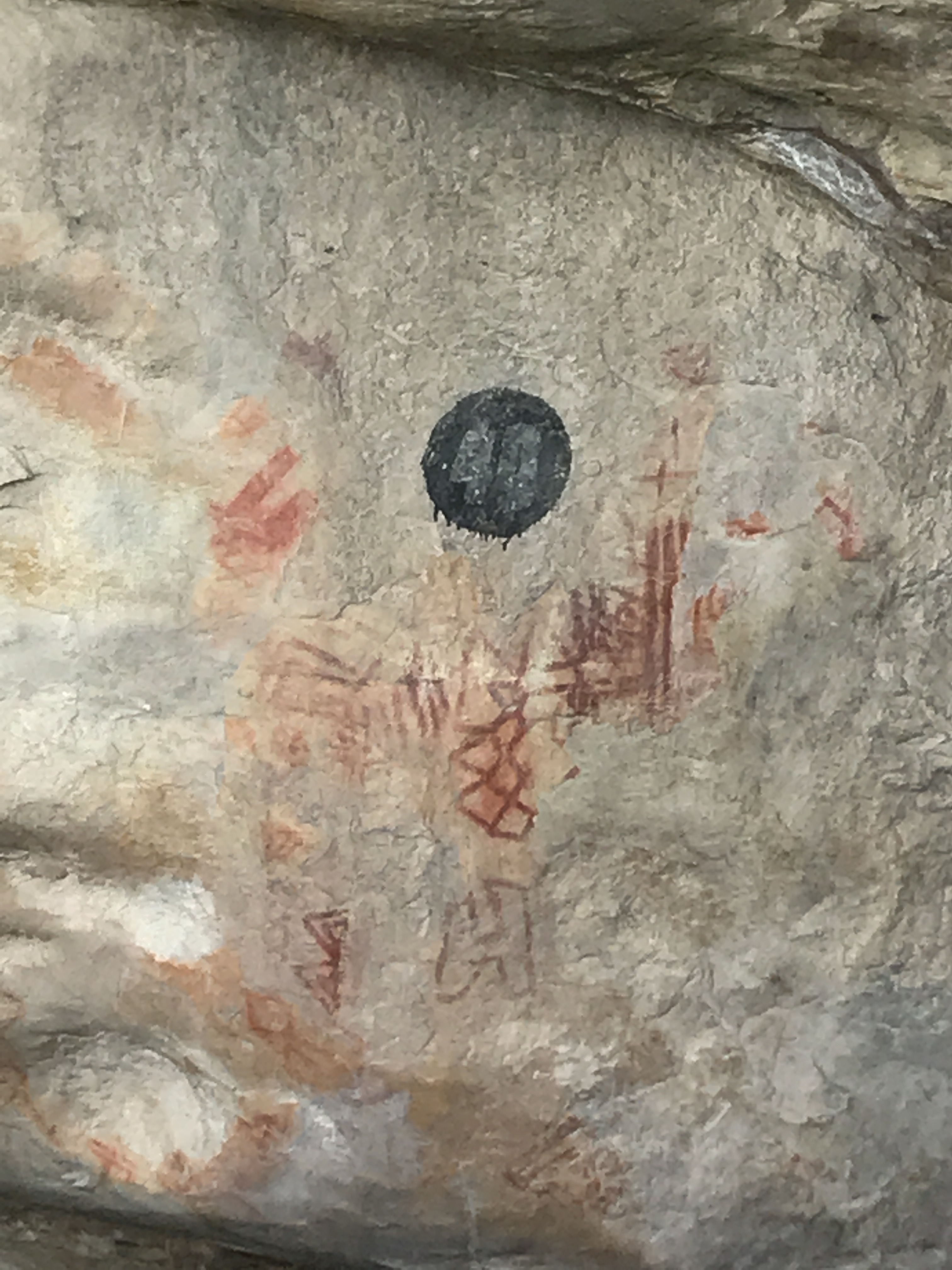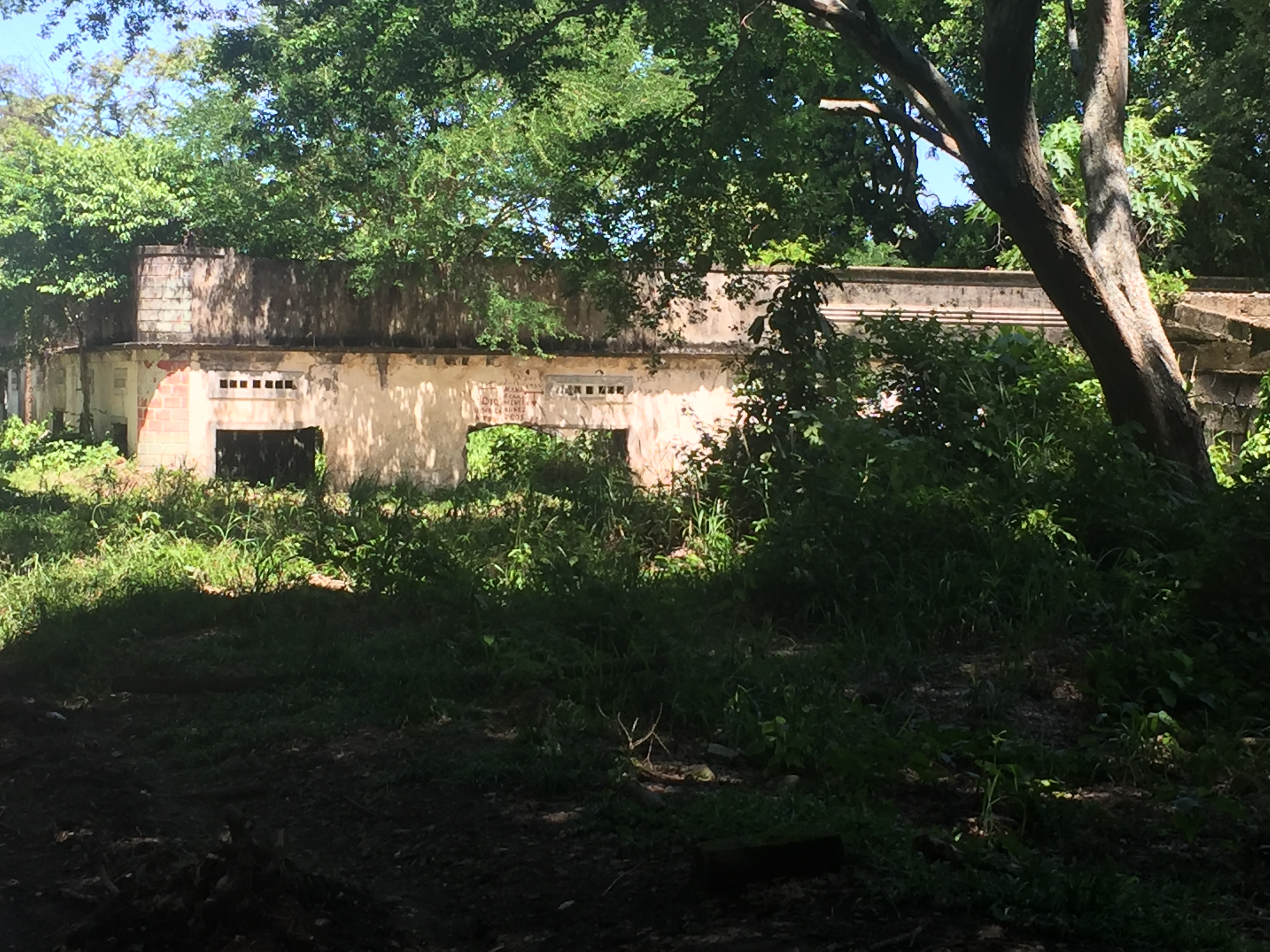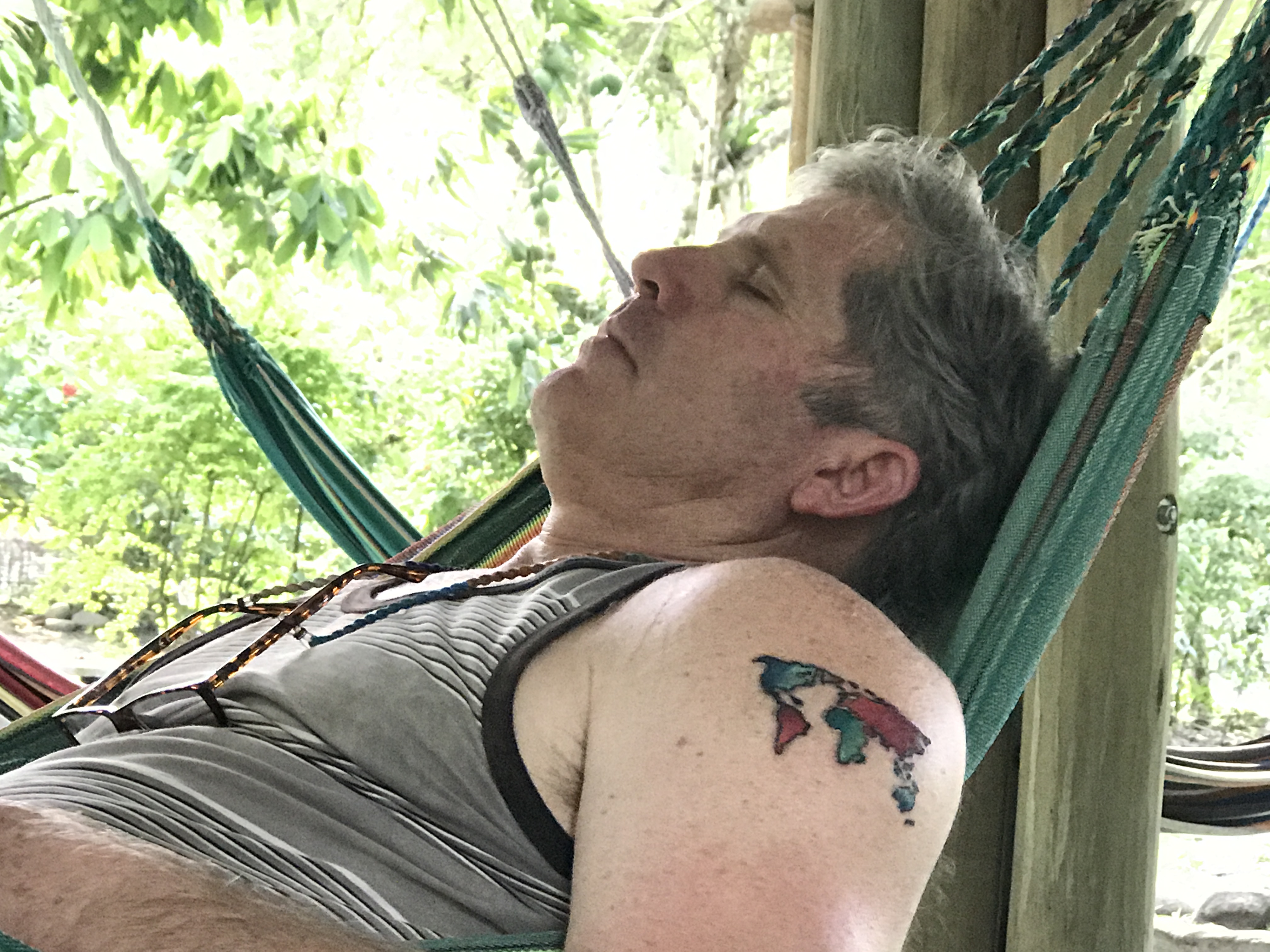For this part of our Tour de Colombia we were going to see some historical sites. Our first destination was the city of Facatativa. In this location they discovered an extensive collection of rock art. It is likely that other indigenous or native treasures were here, but they were looted long ago. So only the rock art remains as a clue to the people who inhabited this area.
 In what seems to be an unusual management plan, this large area (possibly 20 acres) has been converted into a public park. There are picnic tables, bbq stands, a pond, walking trails and shade structures throughout the area. They are threaded throughout the boulders which bear the ancient art. It is a fascinating way to encourage vs. discourage the use of a historical site! And so very different from the regulations and restrictions in most ancient sites in the USA. Encouraging people to observe, enjoy and learn about their history is wonderful. Here are more photos of the area.
In what seems to be an unusual management plan, this large area (possibly 20 acres) has been converted into a public park. There are picnic tables, bbq stands, a pond, walking trails and shade structures throughout the area. They are threaded throughout the boulders which bear the ancient art. It is a fascinating way to encourage vs. discourage the use of a historical site! And so very different from the regulations and restrictions in most ancient sites in the USA. Encouraging people to observe, enjoy and learn about their history is wonderful. Here are more photos of the area. 
One of the most impressive areas of artwork was under a huge rock overhang. We took photos from a distance, and then laid on the cool grass and looked up at the gigantic rock above us. Truly amazing! 


In addition to the beautiful ancient art, the area has some very unusual lava formations. They appear bubbly or lumpy, on a massive scale. Perhaps this contributed to the natives attraction to this region.
From this area we moved toward the Magdalena River valley. This river is the longest river in Colombia, traveling from one end of this beautiful place to the other. It has been used for commerce, trade and agriculture for thousands of years. But tonight it was used for overnighting!  And while the campsite looks lovely, it must be noted that the temperature was HOT and the mosquitoes were VORACIOUS. We only stayed one night, and then moved back up to cooler elevations and the destination of Armero.
And while the campsite looks lovely, it must be noted that the temperature was HOT and the mosquitoes were VORACIOUS. We only stayed one night, and then moved back up to cooler elevations and the destination of Armero.
The city of Armero has a sad and famous past due to a tragedy that struck in 1985. As a volcano erupted in the Nevada del Ruiz mountains, many miles away, the unknowing dwellers of Armero went about their daily lives. The volcano cone was high up in the clouds, the plumes and smoke and ash were invisible. But the flows of molten earth began their rapid descent to the lower valleys, traveling in streams and rivers towards the area of population and productivity.
The people of Armero fell victim to poor government communication, natural disaster and a loss of lives like few towns have ever seen. Armero remains an abandoned relic to remind everyone of the potential for complete devastation due to a natural disaster and a lack of action.

You can read more about the Armero Tragedy if you click on this link (it will open in a new screen, be sure to come back) or you can view a brief video if you click on this link (again you must return) You can also search for more stories, including the sad situation of Omayra Sanchez, a young girl who died while partially trapped in the mud and debris. Her aunt (buried alive in the mud below her) was clutching her feet and a rooftop had trapped her legs and hips. She lived for several days, communicating with the rescuers during their futile attempts. The rescuers were unable to free her and she asked them to leave her alone so she could pass in peace.  But she is only one of over 22,000 individuals who perished or went missing as the lajar (lava, mud and water) flows moved rapidly through the city. Even though the Colombian government officials were aware of the eruption and the risk to thousands, they did little to inform or evacuate people. The fast-moving lajars claimed livestock, buildings and human lives with very little help from government agencies. This remains one of the biggest scandals in recent Colombian history.
But she is only one of over 22,000 individuals who perished or went missing as the lajar (lava, mud and water) flows moved rapidly through the city. Even though the Colombian government officials were aware of the eruption and the risk to thousands, they did little to inform or evacuate people. The fast-moving lajars claimed livestock, buildings and human lives with very little help from government agencies. This remains one of the biggest scandals in recent Colombian history.  There are thousands and thousands of gravestones and markers, signifying the location of a loved one at the moment they died. Many were going about their daily business of working a field or walking through the town or working at a store.
There are thousands and thousands of gravestones and markers, signifying the location of a loved one at the moment they died. Many were going about their daily business of working a field or walking through the town or working at a store.







Visiting Armero was a sobering time for us. It is a beautiful region in the cloudy shadow of the Northern Andes in Colombia. But it remains a sad reminder of the ineffectiveness of government in the face of human tragedy.
 At this point we have covered a significant portion of this large country. Colombia continues to impress us with friendly people, gorgeous scenery and fascinating history. And there is still so much more to see!
At this point we have covered a significant portion of this large country. Colombia continues to impress us with friendly people, gorgeous scenery and fascinating history. And there is still so much more to see!
We moved along to the shore of another river. This time we passed through a few VERY narrow roads to reach our destination.
But once we arrived, we found a beautiful place to relax and enjoy the sounds of the thick jungle around us. We each picked a hammock and listened to the birds. (Well, maybe Nica did not relax!)
And the nightlife was also quite interesting. Meeting up with this little fella reminded me that I am happy to NOT sleep on the ground in a tent! ( that is a life-sized dog sculpture in the background) 
The sounds of the raging river nearby were quite relaxing. And the cool temperatures kept the mosquitoes away. But we needed to move on to our next round of mountain destinations. Enjoy this brief river movie as we say goodbye until next time!















One thought on “Colombia- Ancient art, an abandoned city and raging rivers.”